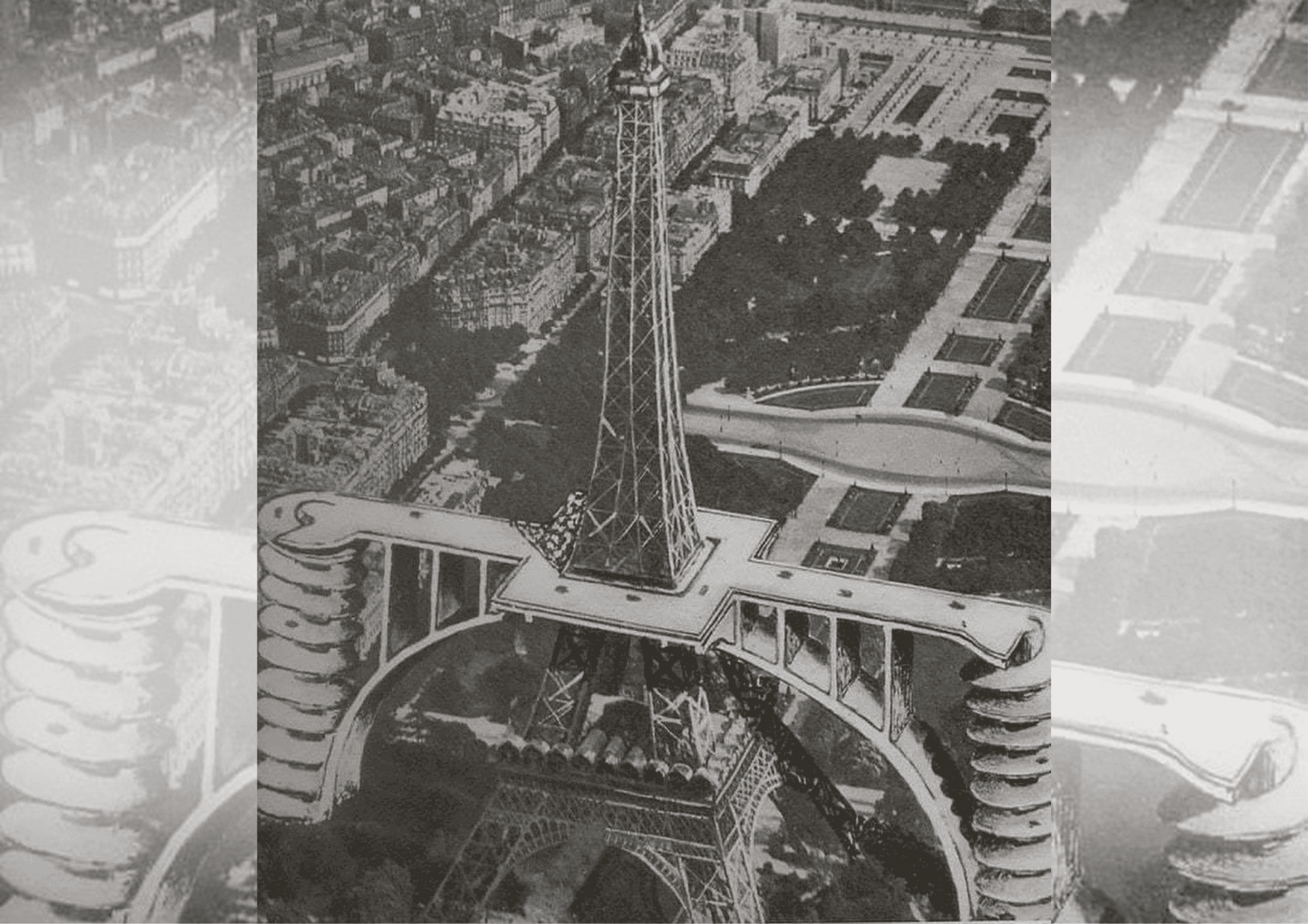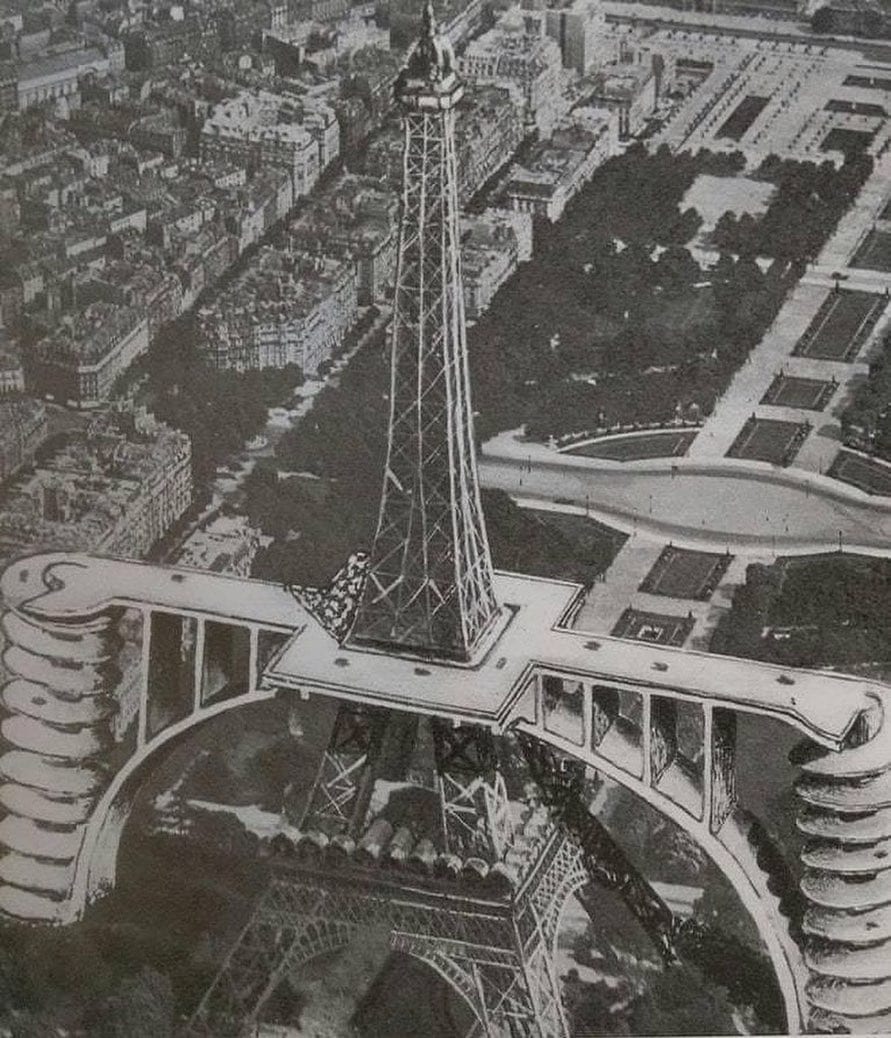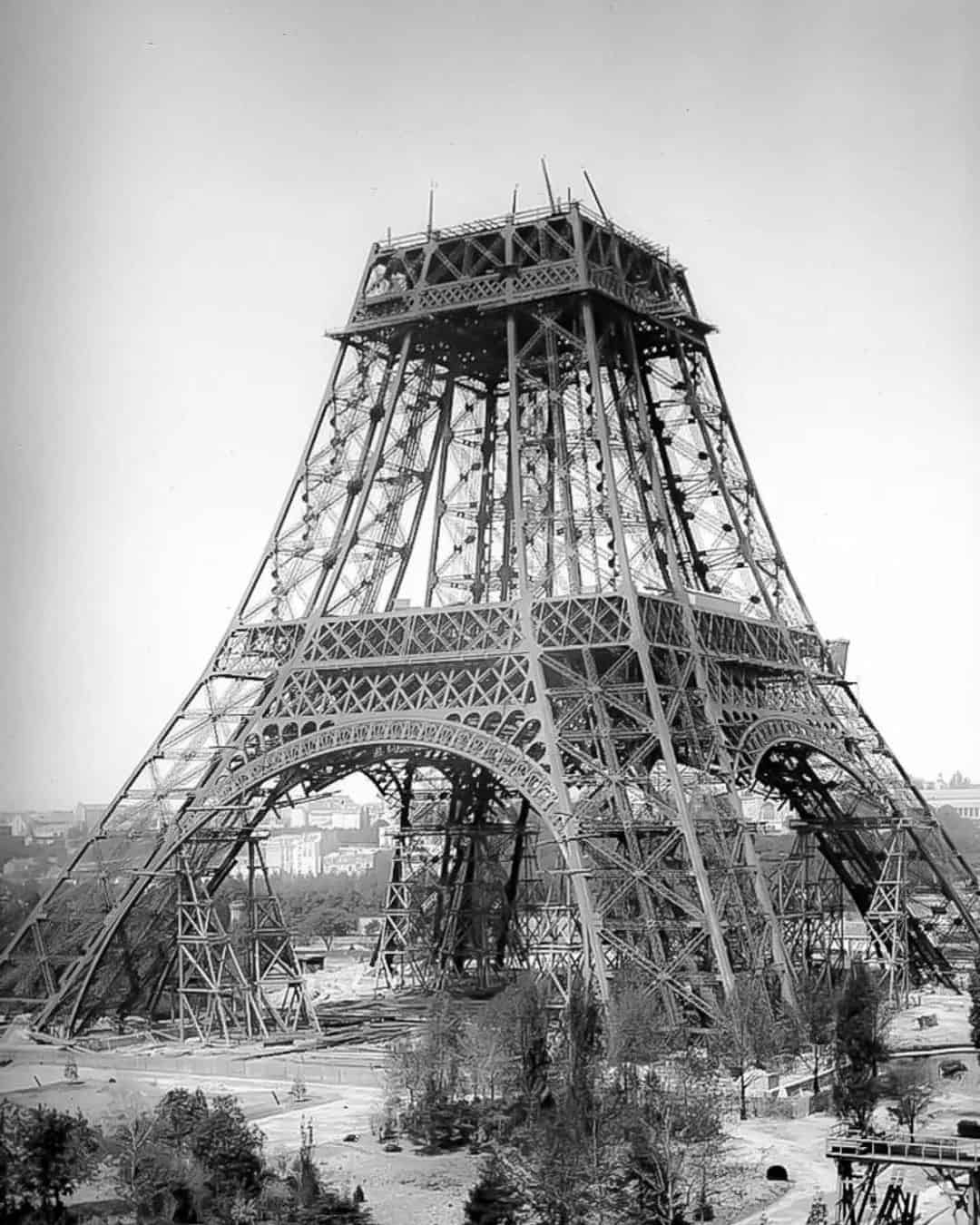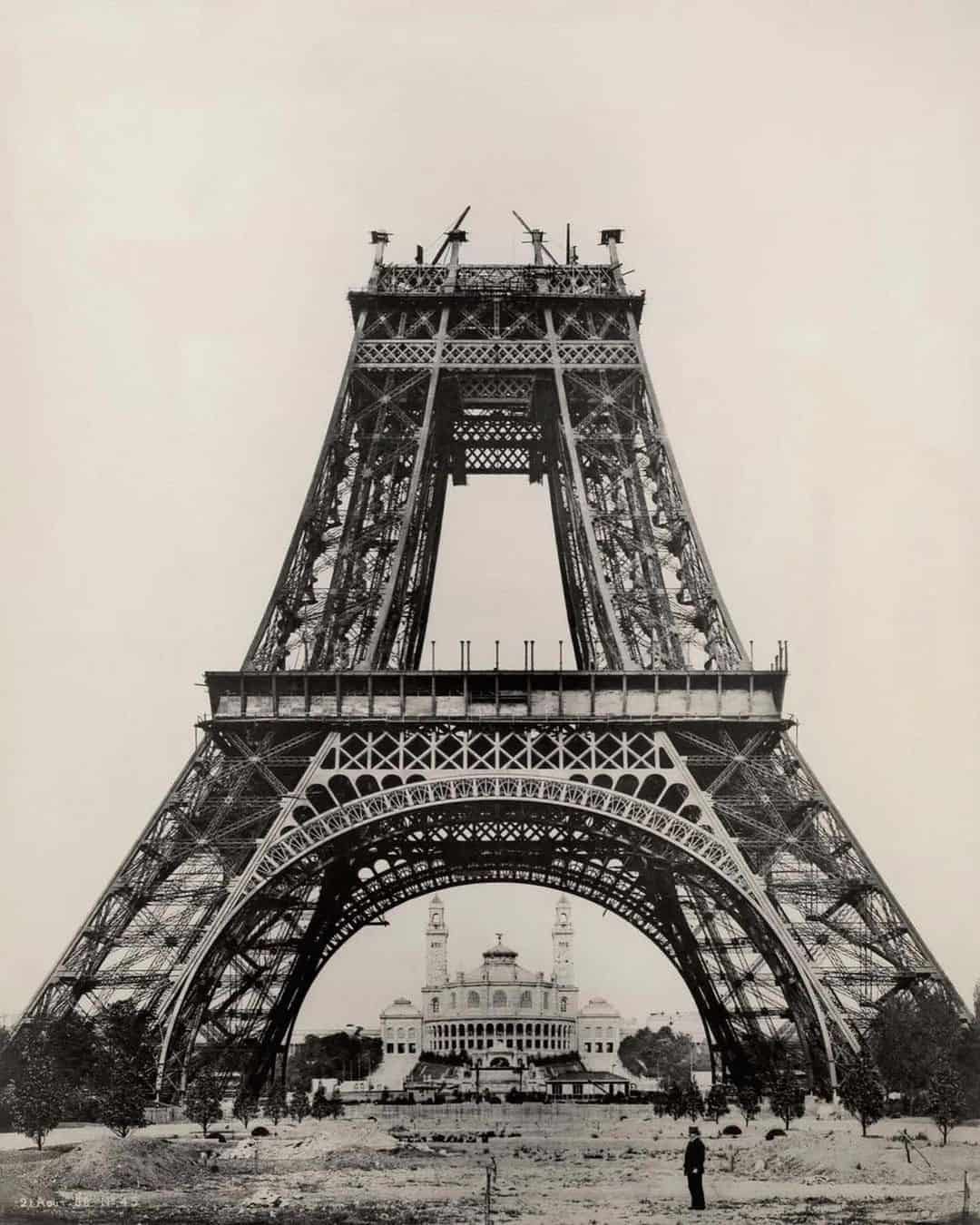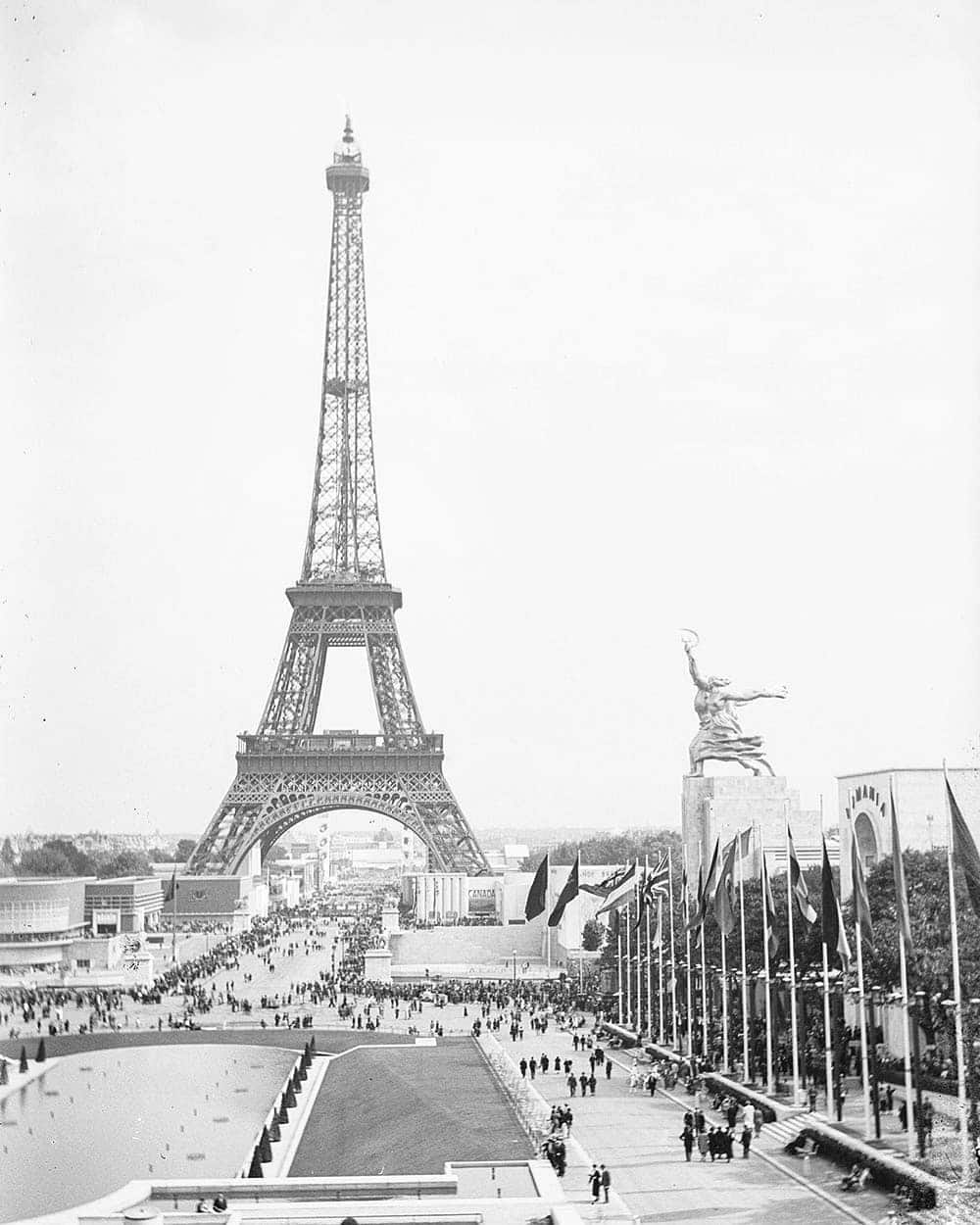The Eiffel Tower, a grand symbol of Paris, had always been a marvel of modern engineering.
When Gustave Eiffel unveiled it for the 1889 World’s Fair, it stood as the tallest structure in the world, a testament to human ingenuity and ambition.
Over the years, it became a beloved landmark. But by the 1930s, the automobile was king in cities across the globe, and the French were not immune to the allure of cars!
With the rise of motor vehicles, the idea of combining Parisian chic with speed and convenience was appealing!
What better way to experience the Eiffel Tower than from the comfort of your car, while cruising up a spiral ramp?
2. A Spiraling Dream
The plan to make the Eiffel Tower’s second floor car-accessible came from André Basdevant who was eager to embrace the future!
His idea was to build two helical concrete ramps on each side of the tower and allow cars to drive up to the second level.
Once there, drivers would be able to take in the spectacular views of Paris from above, without ever having to leave their vehicles!
The thought of driving a car up to such a famous landmark seemed both thrilling and practical—after all, the Eiffel Tower had become one of the most visited attractions in the world by then!
3. The Engineering Challenges
The proposal was not entirely as far-fetched as it might seem. After all, cars were getting more powerful, and with a little creative engineering, a spiraling, multi-level ramp could handle the job!
It was an idea that combined the charm of Paris with the thrill of driving!
4. Reality Checks and Logistical Nightmares
However, the Eiffel Tower, as impressive as it was, was never designed to accommodate moving vehicles!
And while a car might fit through the narrow spaces between the legs, how would they manage to navigate in such a confined space?
Would there be enough room for cars to park at the top? Could the structure actually support the weight and pressure of thousands of cars?
Then, there was the reality check of practicality. How long would it take to drive up?
What about the tourists who want to walk around and enjoy the view without worrying about dodging traffic? And who would be in charge of managing the car flow? The logistics are a nightmare.
5. A Timing That Couldn’t Have Been Worse
To make matters worse, the timing of the proposal couldn’t have been worse. Just as the Eiffel Tower’s ramp project was gaining traction, Europe was hurtling toward World War II!
The ramp was never built, and the Eiffel Tower remained as it always had been—a monument to human achievement, but without the bizarre addition of a drive-thru experience!
6. The Legacy of an Absurd Idea
Looking back, it’s easy to laugh at the absurdity of the idea!
Today, the Eiffel Tower remains free of cars, and visitors still have to climb the stairs or take the elevator to the top, where they can enjoy the view on foot!
While the idea of a spiraling car ramp might seem laughable now, it serves as a reminder that even in the world of engineering marvels, the line between genius and folly is sometimes a fine one.
And every now and then, we get to see that line drawn with a little humor!

